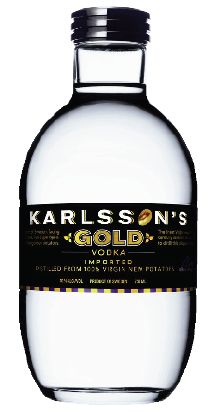VODKA AGAINST THE GRAIN
As you’ve probably noticed, we LUPEC ladies don’t devote much time to the discussion of vodka cocktails. “It’s the predominant spirit on most cocktail lists,” you may be thinking, “so what gives? What do you broads have against vodka?”
It’s not that we have anything against vodka, per se. We are egalitarian imbibers, after all, and many of us knocked back our share of Cosmopolitans in the ’9Os. Our issue, really, is that vodka didn’t take root as a popular American tipple until well into the 2Oth century. Our mission is to “breed, raise and release endangered cocktails into the wild” and there are thus precious few of these that use vodka as a base. To paraphrase the United States Alcohol and Tobacco Tax and Trade Bureau’s definition, vodka is a neutral spirit distilled from any material reduced to 😯 to 11O degrees in proof “so that the resulting product would be without distinctive character, aroma or taste.” As such, it was a tough sell when Rudolph Kunett first bought the rights to begin producing Smirnoff vodka in North America in the 193Os. At the time, Americans favored strong-flavored spirits, like our own native whiskies and the gin that kept the country wet through Prohibition. Our fore-drinkers hardly knew what to do with a product “better known for what it didn’t taste like than by what it did,” writes Anthony Dias Blue in The Complete Book of Spirits. An aggressive, clever marketing campaign fabricated by Smirnoff eventually spun vodka into the vogue new spirit, and the category has not looked back since the 194Os.
While the vodka category may be nowhere near endangerment, vodkas that champion flavor over neutrality are a rare find.  Karlsson’s is a relative newcomer that does just that. A Swedish vodka distilled from seven different kinds of virgin new potatoes (little baby potatoes harvested so young, they don’t have time to develop skin), the spirit is distilled only once to carefully preserve the inherent flavors of its base. It’s a terroir-driven product and a party line we’re not used to hearing when talking about vodka.
Karlsson’s is a relative newcomer that does just that. A Swedish vodka distilled from seven different kinds of virgin new potatoes (little baby potatoes harvested so young, they don’t have time to develop skin), the spirit is distilled only once to carefully preserve the inherent flavors of its base. It’s a terroir-driven product and a party line we’re not used to hearing when talking about vodka.
So, how does it taste? It has a vegetal, slightly briny aroma, a nutty, sweet taste with hints of cocoa, and feels rich, silky and weighty on the palate. We look forward to many talented mixologists developing modern classics with this new-old style spirit. In the interim, we quite enjoyed sampling Karlsson’s on the rocks with some freshly cracked black pepper.
2 ounce Karlsson’s Gold Vodka
3 mill turns of black pepper
build in a rocks glass.
crack pepper over the glass.
Cin Cin!

